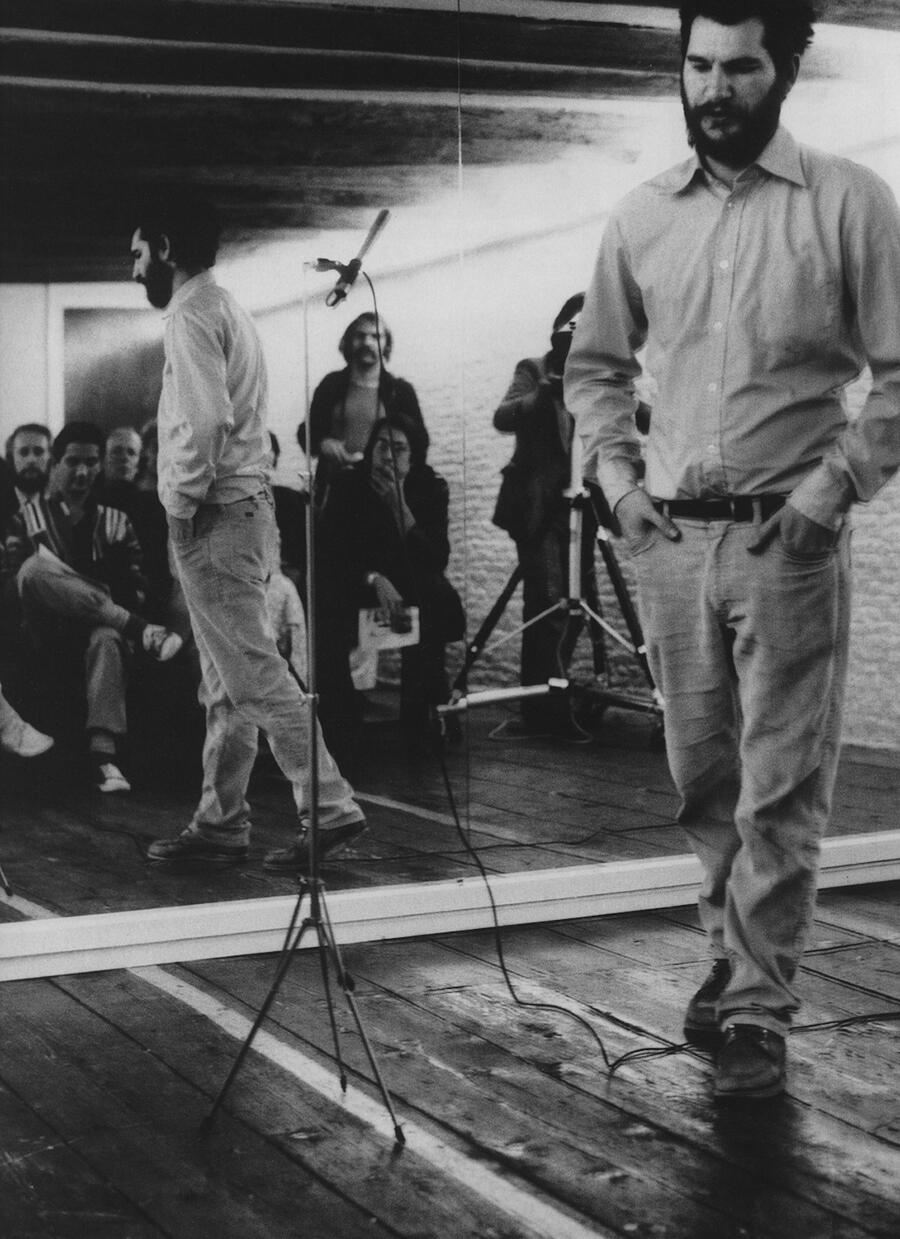Remembering Dan Graham’s ‘Art of Life’
The late artist and writer radically reconceived the relationship between art, artist and audience.
The late artist and writer radically reconceived the relationship between art, artist and audience.

Dan Graham was a radical who changed the contract between art and its viewer. He helped the field transition from a focus on things to the experiences of the visitor. And he found ways to give art a particular strangeness and an ability to pop up anywhere. His was art in the form of a sociological study of suburban New Jersey tract housing (Homes for America, 1965); a medical text describing the flaccid penis immediately after orgasm, placed as an ad in the pages of a porn magazine (Detumescence, 1969); a page containing a list of attributes – numbers of letters, parts of speech – that described itself (Schema, 1966).

For Dan, who considered himself an artist and a writer in the nouveau roman vein of Michel Butor, both practices were less about the ‘dangerous’ solo figure than the collective life, language and world of which everyone is a part. As he wrote in 1969 for an Art Workers’ Coalition meeting, art is ‘free and like sex, with a minimum of two people (subject/object; inside/outside; yin/yang; receiver/sender; people who take pictures of each other just to prove that they really existed) anyone can play, making their rules as they go along’. To me, he fits better with relational figures like Lynn Margulis or Édouard Glissant, who delved into interconnection, than with many contemporary artists.
His later work kept freeing itself from being a one-sided conversation. He worked with light, space and perception, but explicitly asked the public to complete the work. Two-way mirrored glass famously enabled many of these experiments: enter a room, see your reflection in a mirror; enter the neighbouring room, see others admiring themselves from the other side of the same glass. His pavilions dramatize light and space, but make the visitor into the protagonist, looking out over a landscape, like a Hudson River School painter.

For Dan, webs of connections were constantly visible. Walking through the Smithsonisan, he would note how colonial paintings of Native Americans reminded him of depictions of punks and point out the connection in two words. His mind distilled insights into flavourful reductions. He delighted in an art of life in which publishing a collection of your writings under the title Nuggets (2014) was a victory greater than being approached for a commission by a big-time collector in the dreaded Hamptons.
Dan championed the work of Antoine Catala, Tacita Dean, Ceal Floyer, Cindy Hinant, Mieko Meguro, Trevor Shimizu and many more. He constantly taught his artist friends about architecture and music – everything from no wave to bubblegum to funk – and was himself a formative influence on bands such as Sonic Youth. One of the few times he got genuinely mad at me was when I lost a cherished Louise Lawler book.

‘Dear Daddio’, went one of Dan’s recent emails, ‘I’ve been reading short stories by [Herman] Melville, [Edgar Allan] Poe and [Nathaniel] Hawthorne; my favourites were “I and My Chimney” [1856], “The Piazza” [1856] and “The Two Temples” [1924] by Melville. “The Piazza”, like Pierre [1852], seems to have an underlying brother-sister incest aspect. Question: how are your two sisters?’
His timing was unbeatable. As a phone call (he loved talking on the landline) wound down, he had a habit of skipping the awkward exit pleasantries by suddenly yelling ‘BYE!’ and hanging up, leaving you bemused but smiling.

Dan was in touch with street-level culture, partly by walking around and traveling all the time, partly through his incessant television-watching and going to the movies. He loved the uptown bus station on 179th Street and the places that put formal beauty into the world of regular people. He had suffered as a child and would occasionally talk about that. He was most interested in making a fun, communal world even as he shone out so specially.
Or, as he said in his 1969 Art Workers’ Coalition speech: ‘The artist shares in mankind’s various media of expression having no better “secrets” or necessarily seeing more inside or outside of things than any other person; often he is more calculating; he wants things to be as interesting as possible; to give and return pleasure; to contribute to the life-enhancing social covenant […] We must go back to the old notion of socially “good works” as against the private, aesthetic notion of “good work” – i.e.: art to go public.’ BYE!
Main image: Dan Graham, Two Correlated Rotations, 1969, black and white photograph, 74 × 86 cm. Courtesy: © Dan Graham and Lisson Gallery






















